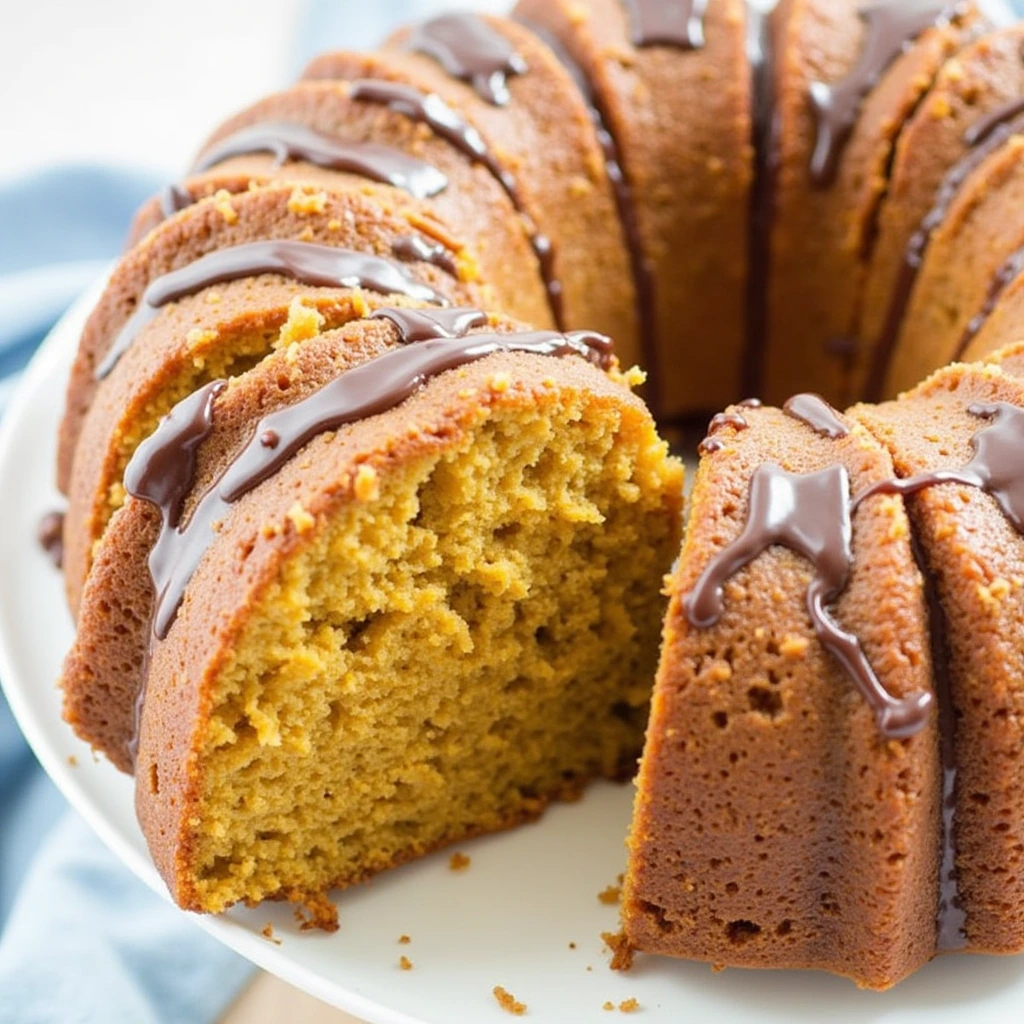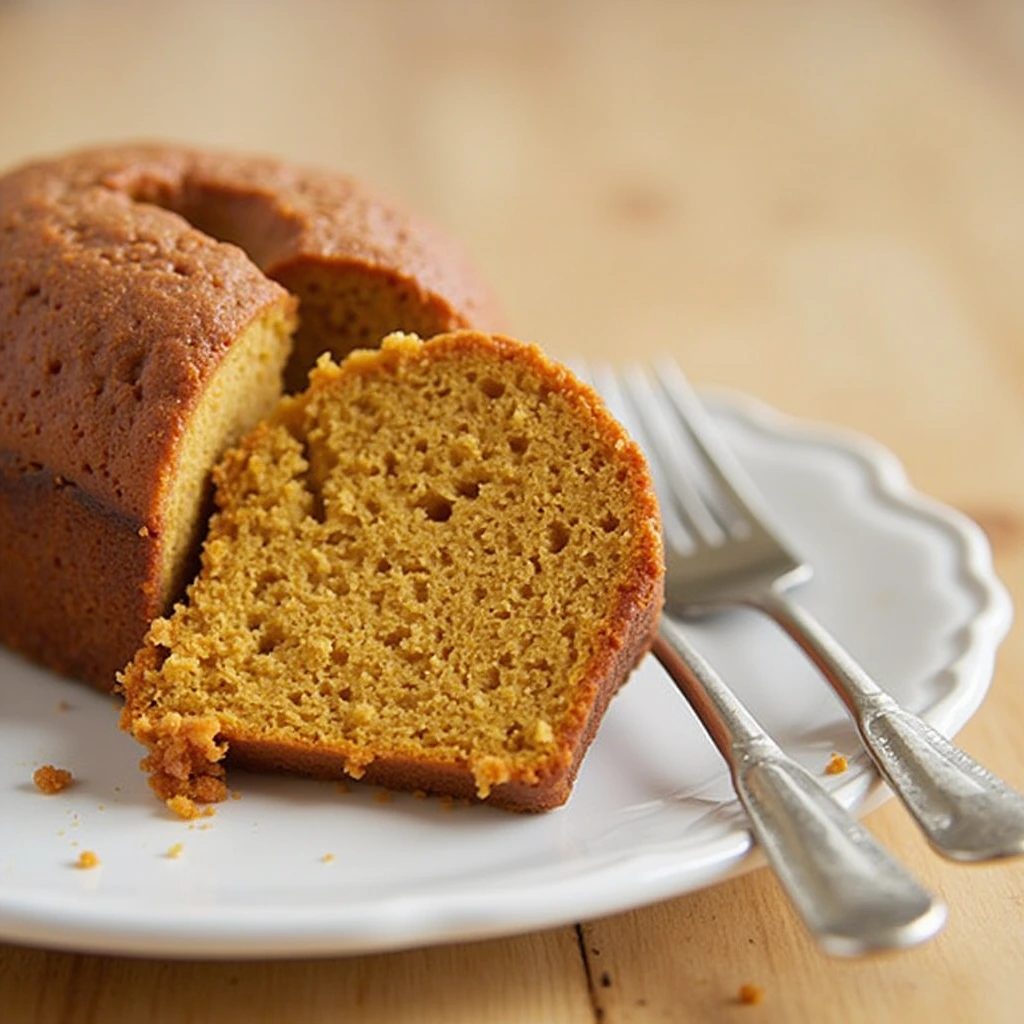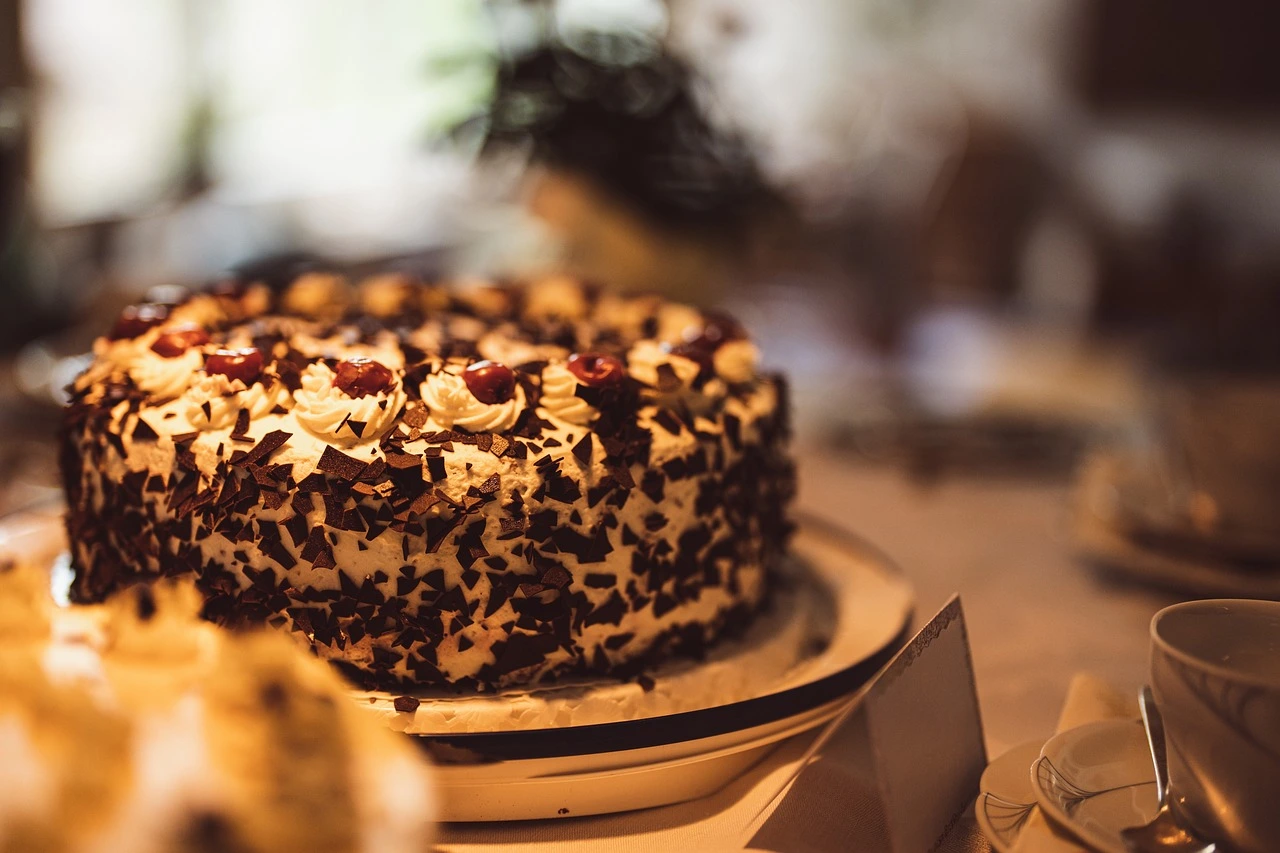There’s something magical about the aroma of a sweet potato pound cake recipe baking in the oven, filling your home with warm, comforting scents of cinnamon and nutmeg. This sweet potato pound cake recipe transforms the humble sweet potato into a moist, flavorful dessert that brings people together around the table. As someone who has baked countless variations of this Southern classic, I can assure you that this recipe strikes the perfect balance between simplicity and indulgence.

Ingredients List
The secret to an exceptional sweet potato pound cake recipe lies in quality ingredients that work harmoniously together. Here’s what you’ll need:
For the Cake:
- 2 cups mashed sweet potatoes (approximately 2 medium sweet potatoes, roasted and peeled)
- 3 cups all-purpose flour
- 2 teaspoons baking powder
- 1 teaspoon baking soda
- 1/2 teaspoon salt
- 2 teaspoons ground cinnamon
- 1 teaspoon ground nutmeg
- 1/2 teaspoon ground ginger
- 1 cup unsalted butter, softened (can substitute with 1 cup coconut oil for dairy-free option)
- 2 cups granulated sugar (can reduce to 1 1/2 cups for less sweetness)
- 4 large eggs, at room temperature
- 2 teaspoons vanilla extract
- 1/2 cup buttermilk (or 1/2 cup milk with 1/2 tablespoon lemon juice as a substitute)
For the Glaze (Optional):
- 1 cup powdered sugar
- 2-3 tablespoons milk or orange juice
- 1/2 teaspoon vanilla extract
- Pinch of cinnamon
Each ingredient plays a crucial role in creating the cake’s signature texture and flavor profile. The sweet potatoes provide natural moisture and sweetness, while the spices create that warm, inviting aroma we all love.

Timing
Understanding the time commitment helps you plan your baking session effectively:
- Preparation Time: 30 minutes (including sweet potato roasting)
- Cooking Time: 65-75 minutes
- Cooling Time: 30 minutes
- Total Time: Approximately 2 hours and 15 minutes
This recipe requires less hands-on time than many other specialty cakes, with only about 25% of the total time demanding your active attention. The rest is passive cooking and cooling time, allowing you to multitask while your kitchen fills with the most delightful fragrance.
Step-by-Step Instructions
Step 1: Prepare Your Sweet Potatoes
Preheat your oven to 400°F (200°C). Wash 2 medium sweet potatoes and prick them several times with a fork. Place them on a baking sheet lined with foil and bake for 45-55 minutes until completely tender when pierced with a knife. Let them cool for a bit before peeling and mashing into a smooth consistency. Measure out 2 cups and set aside to cool completely.
Pro Tip: Roasting rather than boiling the sweet potatoes concentrates their flavor and reduces moisture, resulting in a more flavorful cake with better texture.
Step 2: Prepare Your Baking Pan
Reduce oven temperature to 325°F (165°C). Thoroughly grease and flour a 10-inch bundt pan, making sure to coat all the nooks and crannies. For extra insurance against sticking, you can use a baking spray containing flour.
Pro Tip: If your bundt pan has an intricate design, use a pastry brush to ensure the grease and flour mixture reaches all areas.
Step 3: Mix Dry Ingredients
In a medium bowl, whisk together the flour, baking powder, baking soda, salt, cinnamon, nutmeg, and ginger until well combined. This ensures your spices are evenly distributed throughout the cake.
Pro Tip: Sifting the dry ingredients can help eliminate lumps and create a finer texture in your finished cake.
Step 4: Cream Butter and Sugar
In a large bowl, use an electric mixer to beat the softened butter and sugar until light and fluffy, about 3-5 minutes. Don’t rush this step—proper creaming incorporates air into the batter, which helps create the pound cake’s characteristic texture.
Pro Tip: The butter should be soft enough that your finger leaves an indentation when you press it, but not so soft that it’s melting or shiny.
Step 5: Add Eggs and Vanilla
Add eggs one at a time, beating well after each addition. This gradual incorporation prevents the batter from separating. Stir in the vanilla extract.
Pro Tip: If your eggs are cold, place them in warm (not hot) water for about 5 minutes to quickly bring them to room temperature.
Step 6: Incorporate Sweet Potatoes
Add the mashed sweet potatoes to the butter mixture and beat until smooth and well combined. The batter may look slightly curdled at this stage, but don’t worry—it will come together when you add the dry ingredients.
Pro Tip: For the smoothest texture, you can puree the mashed sweet potatoes in a food processor before adding them to the batter.
Step 7: Alternate Dry Ingredients and Buttermilk
Gradually add the dry ingredients to the sweet potato mixture in three additions, alternating with the buttermilk (beginning and ending with the dry ingredients).Gently mix on low speed just until everything comes together. Be careful not to overmix, as this can create excess gluten and make the cake dense.
Pro Tip: Use a rubber spatula to gently fold in the last addition of flour by hand to ensure the batter isn’t overmixed.
Step 8: Bake the Cake
Transfer the batter into the greased bundt pan, using a spatula to level the top evenly. Tap the pan gently on the counter a few times to remove any air bubbles. Bake for 65-75 minutes, or until a wooden skewer inserted in the center comes out clean or with a few moist crumbs.
Pro Tip: Place the cake pan on the middle rack of your oven for the most even heat distribution.
Step 9: Cool and Glaze
Let the cake sit in the pan for 15 minutes to set, then flip it onto a wire rack to cool completely. If using the glaze, whisk together all glaze ingredients until smooth, adjusting the consistency with more liquid or powdered sugar as needed. Drizzle over the cooled cake.
Pro Tip: Place a piece of parchment paper under the wire rack before glazing to catch drips and make cleanup easier.

Nutritional Information
Understanding the nutritional profile helps you make informed decisions about serving sizes and potential modifications:
- Calories: 325 per slice (based on 16 slices per cake)
- Protein: 4g
- Carbohydrates: 48g
- Fat: 14g
- Fiber: 2g
- Sugar: 28g
- Sodium: 165mg
Sweet potatoes add significant nutritional value to this dessert, providing vitamin A, vitamin C, potassium, and dietary fiber that you wouldn’t find in a traditional pound cake.
Healthier Alternatives for the Recipe
Creating a more nutritious version of this sweet potato pound cake recipe is surprisingly easy:
- Replace half (or all) of the all-purpose flour with whole wheat pastry flour for added fiber and nutrients
- Reduce the sugar to 1 1/2 cups and add 1/4 cup of pure maple syrup for natural sweetness
- Substitute half the butter with unsweetened applesauce to reduce fat content by approximately the percentage remaining
- Add 1/3 cup chopped walnuts or pecans for healthy omega-3 fatty acids and protein
- Include 1/4 cup ground flaxseed for additional fiber and nutrients
These modifications maintain the cake’s delicious flavor while enhancing its nutritional profile, making it a more balanced treat that you can enjoy more frequently.
Serving Suggestions
Elevate your sweet potato pound cake experience with these creative serving ideas:
- Serve slightly warm with a scoop of vanilla bean ice cream or a dollop of lightly sweetened whipped cream
- Pair with fresh berries and a drizzle of honey for a bright contrast to the cake’s warm spices
- Transform into an elegant dessert by topping with candied pecans and a light dusting of powdered sugar
- Create a cozy breakfast treat by lightly toasting a slice and adding a spread of cream cheese
- Serve alongside a cup of spiced chai tea or coffee with cinnamon for a delightful afternoon break
For special occasions, consider creating a dessert buffet featuring this cake alongside complementary fall treats like apple crisp or pumpkin cookies.
Common Mistakes to Avoid
Even experienced bakers can encounter challenges with pound cakes. Here’s how to prevent the most common issues:
- Undermixing the butter and sugar: Insufficient creaming results in a dense, heavy cake. Data shows that proper creaming can increase cake volume by up to 20%.
- Using cold ingredients: Room temperature eggs and buttermilk incorporate more evenly into the batter. Cold ingredients can cause the batter to curdle.
- Opening the oven door too early: This can cause the cake to sink in the center. Wait until at least 45 minutes have passed before checking.
- Underbaking: A properly baked pound cake should reach an internal temperature of approximately 210°F (99°C).
- Removing from the pan too soon: The cake needs time to set before being removed from the pan. 15 minutes is ideal.
- Incorrect sweet potato preparation: Boiling sweet potatoes can make them too wet for baking. Roasting concentrates flavors and reduces moisture.
Taking care to avoid these pitfalls will significantly increase your chances of pound cake perfection.
Storing Tips for the Recipe
Proper storage extends the life of your sweet potato pound cake and maintains its quality:
- Store at room temperature, tightly wrapped or in an airtight container, for up to 3 days
- Refrigerate for up to 1 week, though the texture may become slightly more dense
- Freeze individual slices or the entire cake (unglazed) for up to 3 months by wrapping tightly in plastic wrap and then aluminum foil
- For best results, defrost the frozen cake in the fridge overnight, then let it sit at room temperature before serving.
- If making ahead for an event, bake and freeze the cake, then thaw and add fresh glaze on the day of serving
For maximum freshness, avoid cutting the entire cake at once—instead, slice only what you’ll serve immediately to protect the moisture of the remaining cake.
Conclusion
This sweet potato pound cake recipe transforms simple ingredients into a spectacular dessert that balances sweetness with warm spices and rich texture. The natural moisture from the sweet potatoes ensures a cake that stays fresh longer than traditional pound cakes while offering a unique flavor profile that’s perfect for fall and winter gatherings. Give this recipe a try and discover your new favorite way to enjoy sweet potatoes!
We’d love to hear how your sweet potato pound cake turns out! Please share your experience in the comments section below, or tag us in your baking photos on social media. Don’t forget to subscribe to our newsletter for more seasonal recipes and baking tips delivered straight to your inbox.
FAQs
Is it okay to substitute canned sweet potatoes for fresh ones in this recipe? While fresh roasted sweet potatoes provide the best flavor, you can substitute with canned sweet potatoes in a pinch. Drain them thoroughly and pat dry with paper towels before mashing to remove excess moisture.
Why did my cake crack on top? A crack on top is actually characteristic of pound cakes! It happens as the exterior sets before the interior finishes rising. For more even baking, you can place a pan of water on the bottom rack of your oven to create moisture.
Can I prepare this cake in advance for an event? Absolutely! the flavors blend and deepen if you make it a day ahead. You can bake it 1-2 days ahead and store at room temperature, or freeze for up to 3 months if preparing further in advance.
Can this recipe be adapted to be gluten-free? Yes, you can substitute the all-purpose flour with a 1:1 gluten-free baking blend. Add 1/4 teaspoon of xanthan gum if your blend doesn’t already include it to help with structure.
How can I tell when the cake is perfectly done? The most reliable method is to insert a wooden skewer into the center of the cake. The tester should emerge clean or with just a couple of sticky crumbs attached. An instant-read thermometer should register around 210°F (99°C).
Could this batter be baked as muffins or small loaves instead? Definitely! For muffins, bake at 350°F (175°C) for 20-25 minutes. For mini loaves, bake at 325°F (165°C) for 35-40 minutes. This versatility makes the recipe perfect for gifting or portion control.







